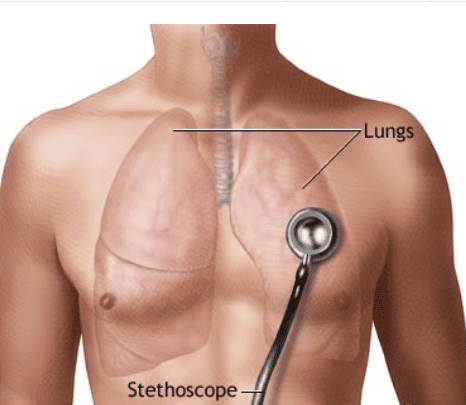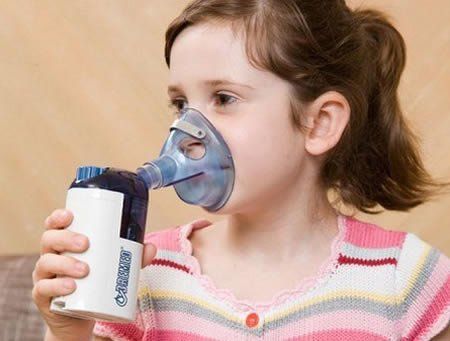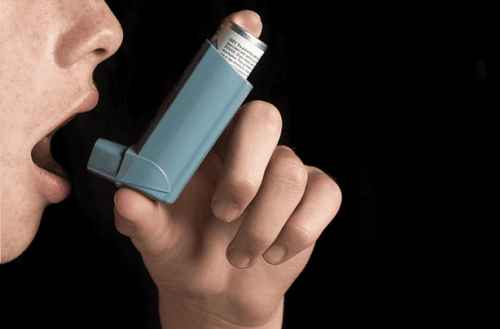This is an automatically translated article.
Asthma is a common disease that makes it difficult for patients to breathe, wheeze and difficult to treat definitively. Currently, the degree of asthma is divided into 4 levels with different signs and levels.
1. Mechanism of action of asthma attacks
Asthma attacks cause shortness of breath, wheezing is a sign of abnormalities in the respiratory system, especially the small airways such as bronchi, bronchioles. These airways have a mucosal lining surrounded by a layer of muscle. In people with asthma, chronically inflamed airways make them very sensitive to specific triggers.
Triggers that lead to severe asthma attacks are often cigarette smoke, pollen, dust, perfume, cold weather, vigorous exercise, stress or even the common cold.
When a person with asthma is exposed to an agent, the rings of soft muscles that surround the small airways in the lungs constrict and become narrower, causing a feeling of tightness in the chest. At the same time, the agents make the inflammation worse, the mucosal layer swells and secretes more mucus. Normally the body uses mucus to block and eliminate very small particles (pollen, dust) but during an asthma attack, it causes the airways to narrow and makes it difficult to breathe, wheezing. , dry cough, lack of air.

Khói thuốc có thể là nguyên nhân dẫn đến các cơn hen phế quản nặng
2. Definitive diagnosis of bronchial asthma
To diagnose bronchial asthma, the doctor will evaluate based on the following 4 factors:
Medical history: Exploiting patient history information, family having allergic diseases such as urticaria, eczema, rhinitis allergies or have been diagnosed with asthma. Shortness of breath, wheezing, chest heaviness: Usually occurs at night, recurs many times when encountering stimuli or changing weather. When taking bronchodilators, the condition improves or stops the attack. Using a stethoscope, a crackling sound can be heard during an episode of dyspnea. Peak flow meter (PEF) measurements show an increase in PEF of 20% or more from pre-medication or a morning-afternoon change of PEF equal to or greater than 20%, suggesting a definitive diagnosis of asthma. In addition, if trial treatment with beta 2 agonists and inhaled corticosteroids is found to be effective (reducing dyspnea, reducing or stopping the rales, improving PEF) is also a sign to diagnose asthma.

Ống nghe phổi giúp chẩn đoán bệnh hen phế quản
3. Classification and assessment of asthma severity
According to the "Guidance on diagnosis and treatment of asthma" of the Ministry of Health in 2009, the level of asthma is divided into 4 levels with specific signs as follows:
3.1. Mild asthma
Mild asthma is shown in the following signs:
Difficulty breathing while walking; Can lie down; Speak normally, speak whole sentences; May be stimulated, alert; Slow breathing rate; Heart rate < 100 beats/min; Moderate degree of wheezing, usually only on expiration Few accessory inspiratory contractions and suprasternal depression; Peak expiratory flow (PEF) after first bronchodilator use > 80% Arterial blood gas : Normal PaCO2: <45 mmHg, SaO2 or SpO2 > 95% Management: Repeated inhaled beta 2 stimulator again every 3 hours.

Hen nhẹ người bệnh vẫn có thể nằm được
3.2. Average asthma
The average level of asthma is shown in the following signs:
Shortness of breath when talking, difficulty eating Often want to sit more; Can only speak each sentence; The patient is uncomfortable and struggling; Breathing rate increases, Wheezing sounds increase; There is often contracture of the accessory respiratory muscles and the suprasternal depression; Cardiovascular rate: 100-120 times/minute; Inversion pulse (may be present): 10-25mmHg; Peak expiratory flow (PEF) after first bronchodilator: 60-80% Arterial blood gas: PaO2 > 60 mmHg, PaCO2 < 45mmHg, SaO2 or SpO2 range from 91-95% prefer inhaled beta 2 and consider corticosteroids.
3.3. Severe asthma
Severe asthma is shown in the following signs:
Shortness of breath at rest; The patient is uncomfortable and struggling; Tendency to lean forward; Speaks only word by word; Normal breathing rate > 30 breaths/min, Loud wheezing sound; Contraction of the accessory respiratory muscles and the suprasternal cavity is extensive; Cardiovascular rate: >120/min; Inversion pulse (usually present) >25 mmHg Peak expiratory flow (PEF) after first bronchodilator: 60-80% Arterial blood gases: PaO2 > 60 mmHg, PaCO2 >45 mmHg, possibly cyanosis, possible respiratory failure; SaO2 or SpO2 : <90% The patient is assessed to have severe asthma when:
There are 4 or more severe signs; Response to treatment with aerosol bronchodilators is poor. Treatment: Stimulating inhaled beta 2 and using more corticosteroids.

Hen nặng khiến người bệnh khó thở trong nhiều giờ
3. 4. Critical asthma
Signs of severe asthma are:
Shortness of breath when yawning; The patient is barely able to talk; In a state of lethargy, confusion; Slow breathing rate; Breathing disturbances; No wheezing Paradoxical thoracic - abdominal muscle movements; Slow pulse rate; The inverse circuit may not be seen; A patient is assessed for severe asthma when one of the following signs appears in a patient with a severe asthma attack:
Consciousness disturbance; Pulmonary silence: reduced or absent alveolar murmurs and crackles; Paradoxical thoracic-abdominal respiration (sign of respiratory muscle exhaustion); Slow heart rate, low blood pressure; Slow breathing, pauses in breathing. Asthma is a chronic disease and difficult to cure completely. However, if diagnosed, detected early and treated with the right regimen, the condition will be controlled and the patient will soon return to normal life.
Vinmec International General Hospital is a general hospital with the function of examining and treating many respiratory diseases in both children and adults. At Vinmec, we have also performed endoscopic diagnosis and treatment with modern medical methods for respiratory diseases, not only bringing high efficiency but also minimizing complications of recurrent disease. The great success is because Vinmec is always fully equipped with modern facilities, examination and treatment procedures are performed by a team of experienced and qualified doctors. In addition, Vinmec also deploys many convenient medical services to meet the examination and treatment needs of customers. Currently, Vinmec has been and continues to deploy the Asthma Screening Package to help screen for early disease detection to promptly control and treat the disease and perform clinical examination, take medical history, measure respiratory function, otolaryngology examination, screening for bronchial asthma.
To register for examination and treatment at Vinmec International General Hospital, you can contact Vinmec Health System nationwide, or register online HERE.













